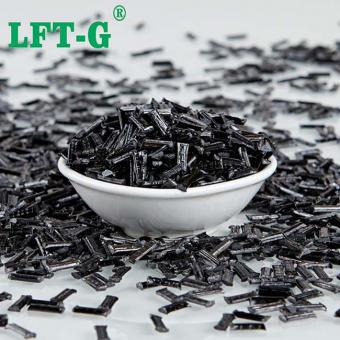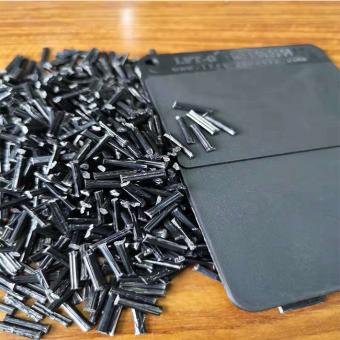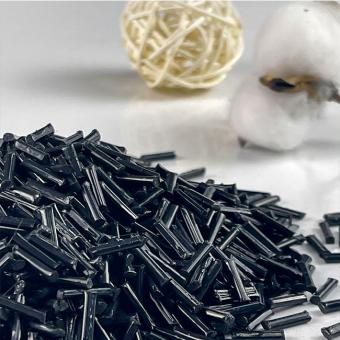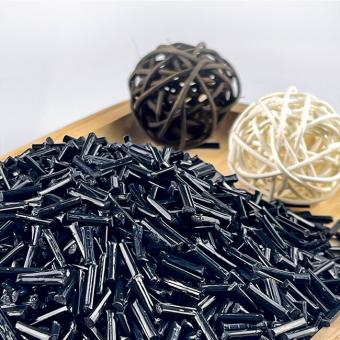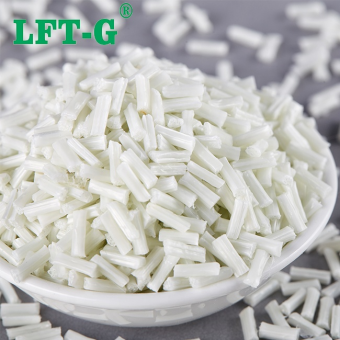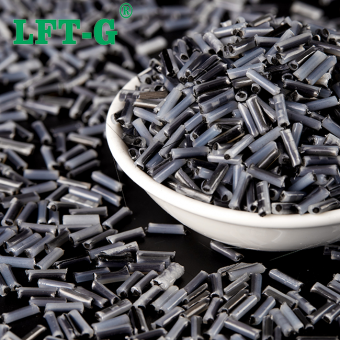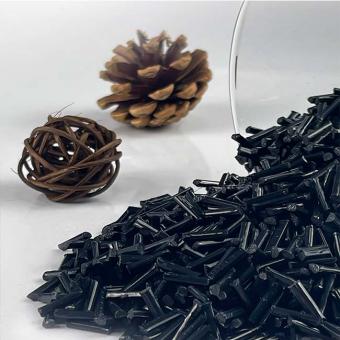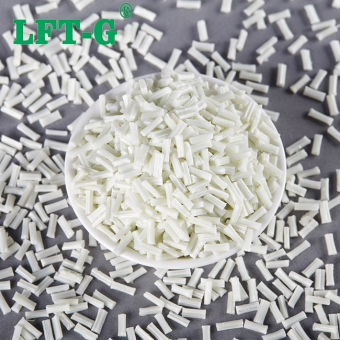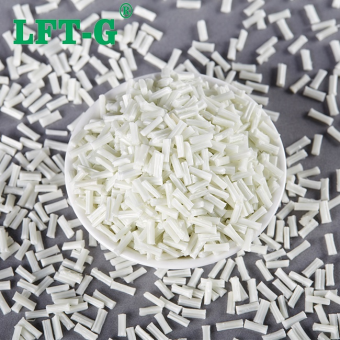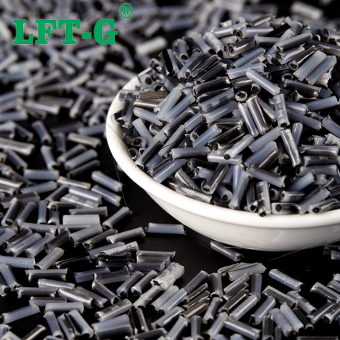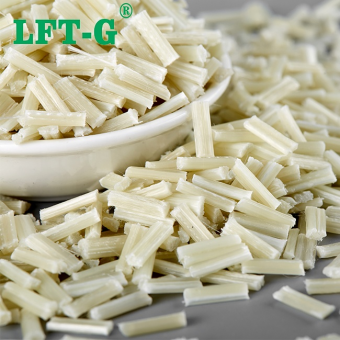-
LFT PA6 Composite Carbon Fiber Reinforced For Military equipmentProduct Name: LFT PA6 Composite Carbon Fiber Reinforced For Military equipment MOQ:25KGS
- PA6 LCF 30
- PA6 CF30
- nylon 6 structure
- pa6 lcf polymer
- High Performance PA6 Composite
- Nylon 6 Thermoplastic
Tags :
-
LFT Carbon Fiber Thermoplastic PA6 LCF40 PolymerProduct Name: LFT Carbon Fiber Thermoplastic PA6 LCF40 Polymerview more
-
LFT High Strength PA6 Carbon Fiber 50% For Lightweight PlasticProduct Name: LFT High Strength PA6 Carbon Fiber 50% For Lightweight Plastic Length: 12-25mmview more
-
LFT Creep Resistant Nylon 6 Fill Long Carbon Fiber Reinforced PelletsProduct Name: LFT Creep Resistant Nylon 6 Fill Long Carbon Fiber Reinforced Pellets Length: 12-25mmview more
-
LFT reinforced composite Polyamide6 Long Glass Fiber 40%Filling specification: 40% (or between 20%-60%) Product grade: General grade (or Toughen resistant grade) Product feature: High toughness, fatigue resistance, low warpage
- medal instead
- customized products
- Nylon 6 resin
- long fiber reinforced thermoplastics
- high toughness
- General grade
Tags :
-
High performance PA6 Polyamide6 long carbon fiber for automotive parts original colorpolyamide (PA), usually called Nylon, is a hetero-chain polymer containing amide group (-NHCo -) in the main chain. It can be divided into aliphatic group and aromatic group. It is the earliest developed and the most used thermoplastic engineering material.
- Nylon 6
- Polymeric compound
- New material of plastic
- Composite material
- High cost performance materials
- Resin material
Tags :
-
PA6 LFT-G brand composite long carbon fiber polyamide 6 for manufacturing helmetsPA6 raw material Polyamide 6, also known as polycaprolactam or nylon 6(PA6), is a semi-transparent to opaque yellowish or milky white thermoplastic resin. The relative density of PA6 is 1.12~ 1.14g /cm3, the melting point is 219~225℃, the tensile strength is 68~83MPa, the compression strength is 82~88MPa, the low temperature resistance is good (-75℃ is not brittle), the wear resistance, self-lubricating and oil resistance is good. Due to the excellent structure and properties of PA6, more and more researchers at home and abroad have carried out important research and development on PA6, including exploring new polymerization chemicals for production, changing its structure and properties, and finding new processing methods, etc. PA6-LCF Long carbon fiber (LCF) reinforced nylon composites with high specific strength, high specific modulus, high temperature resistance and other excellent properties, expand the application space of nylon high technology field, is one of the most important reinforced composites at present. TDS Tested by us, for reference only. Application Injection technology About us Come and contact us now!
- PA6 long carbon fiber
- PA6 LCF
- Nylon 6 composite materials
- injection molding industrial plastic
- PA6 resin
- compond plastic
Tags :
-
PA6 Nylon6 Polyamide6 composite Long Glass Fiber modified plastic 12mm in length original colorPA6 material PA6 is one of the most widely used materials in the current field, and PA6 is a very good engineering plastic with balanced and good performance. The raw materials for the manufacture of nylon 6 engineering plastic are extensive and inexpensive, and it is not restricted by the technological monopoly of foreign companies. However, in order to make good use of this inexpensive and excellent material, we must first understand it. Today, we will start with glass fiber reinforced PA6 engineering plastics, because it is the most important category of PA6 engineering plastics. Just like any other engineering plastics, PA6 has advantages and disadvantages, such as high water absorption, low temperature impact toughness and dimensional stability is relatively poor. So engineers will use different methods to make PA6 better, which we call modification. At present, the most common method is to blend and modify PA6 with glass fiber (GF). Today, we will take a look at the mechanical properties of PA6 engineering plastics under the glass fiber GF system for reference and help us select materials. PA6-LGF 1. Influence of glass fiber content on PA6 engineering plastics We can find from the application and experiment that the content index is often one of the biggest influencing factors in fiber reinforced composites. As the glass fiber content increases, the number of glass fibers per unit area of the material will increase, which means that the PA6 matrix between the glass fibers will become thinner. This change determines the impact toughness, tensile strength, bending strength and other mechanical properties of glass fiber reinforced PA6 composites. In terms of impact performance, the increase of glass fiber content will greatly increase the notch impact strength of PA6. Taking long glass fiber (LGF) filling PA6 as an example, when the filling volume increases to 35%, the notch impact strength will increase from 24.8J/m to 128.5J/m. But the glass fiber content is not more is better, short glass fiber (SGF) filling volume reached 42%, the impact strength of the material reached the highest 17.4kJ/㎡, but continue to add will let the gap impact strength showed a downward trend. In terms of bending strength, the increase of the amount of glass fiber will make the bending stress can be transferred between the glass fiber through the resin layer; At the same time, when the glass fiber is extracted from the resin or broken, it will absorb a lot of energy, thus improving the bending strength of the material. The above theory is verified by experiments. The data show that the bending elastic modulus increases to 4.99GPa when the LGF (long glass fiber) is filled to 35%. When the content of SGF (short glass fiber) is 42%, the bending elastic modulus reaches 10410MPa, which is about 5 times that of pure PA6. 2. Influence of glass fiber retention length on PA6 composites The fiber length of the glass fiber also has an obvious effect on the mechanical properties of the material. When the length of the glass fiber is less than the critical length (the length of the fiber when the material has the tensile strength of the fiber), the interface binding area of the glass fiber and the resin increases with the increase of the length of the glass fiber. When the composite material is broken, the resistance of the glass fiber from the resin is also greater, so as to improve the ability to withstand the tensile load. When the length of glass fiber exceeds the critical, the longer glass fiber can absorb more impact energy under impact load. In addition, the end of the glass fiber is the initiation point of crack growth, and the number of long glass fiber ends is relatively less, and the impact strength can be significantly improved. The experimental results show that the tensile strength of the material increases from 154.8MPa to 164.4MPa when the glass fiber content is kept at 40% and the length of the glass fiber increases from 4mm to 13mm. The bending strength and notched impact strength increased by 24% and 28%, respectively. Moreover, the research shows that when the original length of the glass fiber is less than 7mm, the material performance increases more obviously. Compared with short glass fiber, long glass fiber reinforced PA6 material has better appearance warping resistance, and can better maintain mechanical properties under high temperature and humidity conditions. TDS for your reference PA6 can be made into long glass fiber reinforced material by adding 20%-60% long glass fiber according to the characteristics of the product. PA6 with long glass fiber added has better strength, heat resistance, impact resistance, dimensional stability and warping resistance than without glass fiber added. Following TDS show the data of PA6-LGF30. Application PA6-LGF has the largest proportion of applications in the automotive industry, by electronic and electrical applications, and also involving machinery and engineering ...
- PA6 thermoplastic resin materials
- nylon 6 granules
- glass fiber reinforced plastics granules
- long fiber compounds pa6
- Injection molding plastic
- LFT-G reinforced material
Tags :
-
PA6 Polyamide6 long glass fiber compounds high toughness for electronic appliances power toolsPA6-LGF PA6 modified plastics take pure PA6 slice as matrix, and improve the internal and external properties through blending, filling, strengthening, copolymerization, crosslinking and other methods, accounting for about 15% of the application field of PA6. The long glass fiber content is 20%-60%, and the long glass fiber content is controlled according to different product characteristics. It has the characteristics of high strength, superior heat resistance, good impact resistance, and can replace the lightweight of some metal materials. It is widely used in power tool shell, garden tools, gears, sports equipment, auto parts and so on. Other specification of PA6-LGF Flame retardant PA6 PA6 material has poor flame retardant performance and belongs to flammable materials, but flame retardants can change the combustion characteristics of polymers. Through mechanical mixing method, flame retardants are added to the master material to change the flammable characteristics. The products are divided into: nitrogen flame retardants, phosphorus flame retardants, environmental protection bromine flame retardants, mineral filled flame retardants, which can be used in switches, low-voltage electrical housing, wiring terminals, circuit breakers, etc. Toughen PA6 Mixed with an appropriate amount of toughening agent, the product has the characteristics of low temperature resistance, high flexibility, high fluidity, low shrinkage, low water absorption, high impact resistance, aging resistance and so on. It can be used for baby carriage parts, rolling belts, line clips, connectors and so on. Application In addition to the above applications, in high-end fields such as rail transit, medical treatment, military industry and aerospace, nylon 6 modified plastics are used more and more widely, and PA6 modified plastics are used everywhere in daily life. TDS for reference Nylon reinforced material is made of PA6/PA66 resin as the base material and adding a certain proportion of glass fiber modification. Because nylon itself is not strong enough, by adding 20 to 60 percent of the fiber, to increase its strength. In particular, 30% strength is considered the most appropriate ratio. Also added to 40-50%, according to the specific requirements of different products, coupled with the appropriate formula, can be successful. Advantage of Long glass fiber compounds 1. After glass fiber reinforcement, glass fiber is a high temperature resistant material, therefore, the heat resistance temperature of reinforced plastics is much higher than before without glass fiber, especially nylon plastics; 2. After glass fiber reinforcement, due to the addition of glass fiber, limited the mutual movement between polymer chains of plastics, therefore, the shrinkage rate of reinforced plastics decreases a lot, rigidity is greatly improved; 3. After glass fiber reinforcement, the reinforced plastic will not stress crack, at the same time, the anti-impact performance of plastic is improved a lot; 4. After glass fiber reinforcement, glass fiber is a high strength material, which also greatly improves the strength of plastic, such as: tensile strength, compression strength, bending strength, improve a lot; 5. glass fiber reinforced after, due to the addition of glass fiber and other additives, the combustion performance of reinforced plastics decreased a lot, most of the material can not ignite, is a kind of flame retardant material. Xiamen LFT composite plastic Co., Ltd. Xiamen LFT composite plastic Co., Ltd. is a brand-name company that focuses on LFT&LFRT. Long Glass Fiber Series (LGF) and Long Carbon Fiber Series (LCF). The company's thermoplastic LFT can also be used for LFT-D molding. It can be produced according to customer requirements: 5~25mm length. The company's long-fiber continuous infiltration reinforced thermoplastics have passed ISO9001&16949 system certification, and the products have obtained lots of national trademarks and patents.
- long glass fiber polyamide6
- pa6 lgf30
- long fibre reinforced thermoplastics
- long fiber composite pa6 granules
Tags :
-
LFT-G Polyamide 6 compounds long fiber carbon 20%-60% low warpage high strength for auto partsPolyamide 6 plastic Nylon 6 (PA6), also known as polyamide 6, nylon 6, its mechanical strength and crystallinity is good, and has corrosion resistance, wear resistance and other characteristics, in the automotive industry, rail transportation, film packaging, electronic appliances and textiles and other major fields to achieve a wide range of applications. Although its comprehensive performance, but also has a series of shortcomings, such as PA6 does not have too strong resistance to strong acid and alkali, low temperature, dry state impact strength is not high, the presence of hydrophilic groups will cause high water absorption, modulus of elasticity, creep resistance, impact strength and other water absorption will be significantly reduced, thus affecting the dimensional stability of the product, but also affect the electrical properties of the product. Therefore, it is necessary to do a good research on the modification of PA6. Polyamide 6 filling long carbon fiber Carbon fiber reinforced composites are composite materials composed of high strength fibers and elastic plastics, which have high stiffness and strength, making the products superior heat resistance, excellent impact resistance, and good dimensional stability, meeting their requirements for use in industrial and everyday aspects. PA6-LCF has higher stiffness and strength than traditional polyamide, and the addition of carbon fiber increases the thermal stability of the material and improves its wear resistance, making it a composite material with high strength, high impact resistance and resistance to thermal deformation. TDS for reference Application fields Lab & Factory We can provide you LFT & LFRT material technical parameters and leading edge design Mold front design and recommendations Provide technical support such as injection molding and extrusion molding
- Nylon 6 lcf lft-g
- self owing pa6 pellets
- Nylon composite pellets Polymer granules
- pa6 resin filler cfrp
- long glass fiber filler pa6
- pa6-lcf good price
Tags :
-
LFT PA6 Composite Carbon Fiber Reinforced For Military equipmentProduct Name: LFT PA6 Composite Carbon Fiber Reinforced For Military equipment MOQ:25KGS
- PA6 LCF 30 sample available thermoplastic resin
- PA6 CF30 instead metal and steel materials
- nylon 6 structure virgin grade cf
- pa6 lcf polymer made in China thermoplastic resin
Tags :
-
LFT-G Polyamide 66 with addition long glass fiber 20%-60% reinforced plastic as a replacement for metalWhat is Polyamide 66 materials? PA66, abbreviation of Polyamide 66, chemical name polyhexanediylhexanediamine, commonly known as nylon 66. It is a colorless transparent semi-crystalline thermoplastic polymer, widely used in automotive, electrical and electronic appliances, mechanical instruments and meters, industrial parts and other industries. However, due to the high water absorption, poor acid resistance, low impact strength in dry state and low temperature, and easy to deform after absorbing water, which affects the dimensional stability of the products, the scope of its application has been limited to a certain extent. In order to improve the above shortcomings, expand its field of application, and better meet the requirements for the use of performance, people use a variety of methods to modify PA66, in order to improve the impact, heat deformation, molding and processing performance and chemical corrosion resistance of PA66 plastic. As the specific strength and Young's modulus of glass fiber (GF) is 10-20 times larger than PA66, the coefficient of linear expansion is about 1/20 of PA66, the water absorption rate is close to zero, and there is good heat and chemical resistance, etc., so the glass fiber filling is the most commonly used means of enhancement and modification of PA66. Polyamide 66 fillin long glass fiber compounds Why do we use LFT plastics instead of metal? Many components that are currently manufactured in metal can be produced at lower cost and lower weight in high strength plastics. Compared to metals, plastics offer a number of significant advantages: • Faster production cycles • Lower investment in equipment and tooling • Elimination of finishing operations, such as machining or painting • No corrosion problems • Tighter tolerances • Easier assembly What is the difference between Long glass fiber and Stardard glass fiber? Long glass fiber (LGF) typically contain glass fibers with lengths of 10 to 12 mm, versus 0.7-mm fibers in standard glass-reinforced compounds. In the composite material made of fibers is sheared or pulled, the fibers are pulled out from the matrix, such a pulling process is conducive to the absorption of energy provided by the loading, the longer the fibers are within a certain length, the greater the absorption of energy, and the more significant its strength. And in the same volume amount, due to the longer the single fiber, the fewer the number of fiber roots, the less stress concentration generated at the fiber end, the more difficult the destruction of the material. From the results of practical application feedback, the various properties of long glass fiber reinforced thermoplastic composites are more excellent than Standard glass fiber. In addition, glass fiber reinforced composites in the friction process, the fiber body plays an important role in lubrication, long glass fiber can be much more sustainable, stable lubrication, so the coefficient of friction is lower, less wear, and the formation of the abrasive debris is finer. Because of these advantages, long glass-fiber reinforced thermoplastic composites perform better in real-world applications without fear of high frequencies and high loads. What is the advantages of Polyamide 66? Nylon 6/6 is composed of a molecular structure of higher order than Nylon 6, heightening Nylon 6’s positive characteristics: higher tensile strength and stiffness, better dimensional stability, and a higher melting point. Nylon 6/6 has a high lubricity and resistance to hydrocarbons; and exceptionally balanced strength, ductility, and heat resistance. As strong as it is independently, adding fillers, fibers, lubricants, and impact modifiers can increase Nylon 6/6’s strength times five and stiffness times ten. TDS of 30% long stand fiber glass reinforced Polyamide 6.6 All TDS with 20%-60% fiber specification, please aks technologists What are the applications of Nylon 66 filling long stand fiber glass pellets? Frequently asked questions Q. Does long glass fiber and long carbon fiber injection have special requirements for injection molding machines and molds? A. There are certainly requirements. Especially from the product design structure, as well as the injection molding machine screw nozzle and mold structure injection molding process must consider the requirements of long fiber. Q. Using a long fiber reinforced thermoplastic material, will it block the die hole due to the long length of the fiber or not? A. When using long glass fiber or long carbon fiber, it is necessary to evaluate whether the product is suitable for LFT-G. If the product is too small or the dispensing is not suitable for long fiber materials. The long fiber itself has requirements for mold nozzle. Q. How to choose the rei...
- engineering thermoplastics PA66
- long glass fiber reinforced thermoplastic resin pa66
- heat deflection temperature pa66 gf
- Nylon 66 comounds more dystaline
- injection molded high stiffness and tensile
- gf filled plastic pa66 natural color
Tags :

 e-mail
e-mail English
English français
français Deutsch
Deutsch русский
русский italiano
italiano español
español português
português العربية
العربية 日本語
日本語 한국의
한국의 中文
中文












